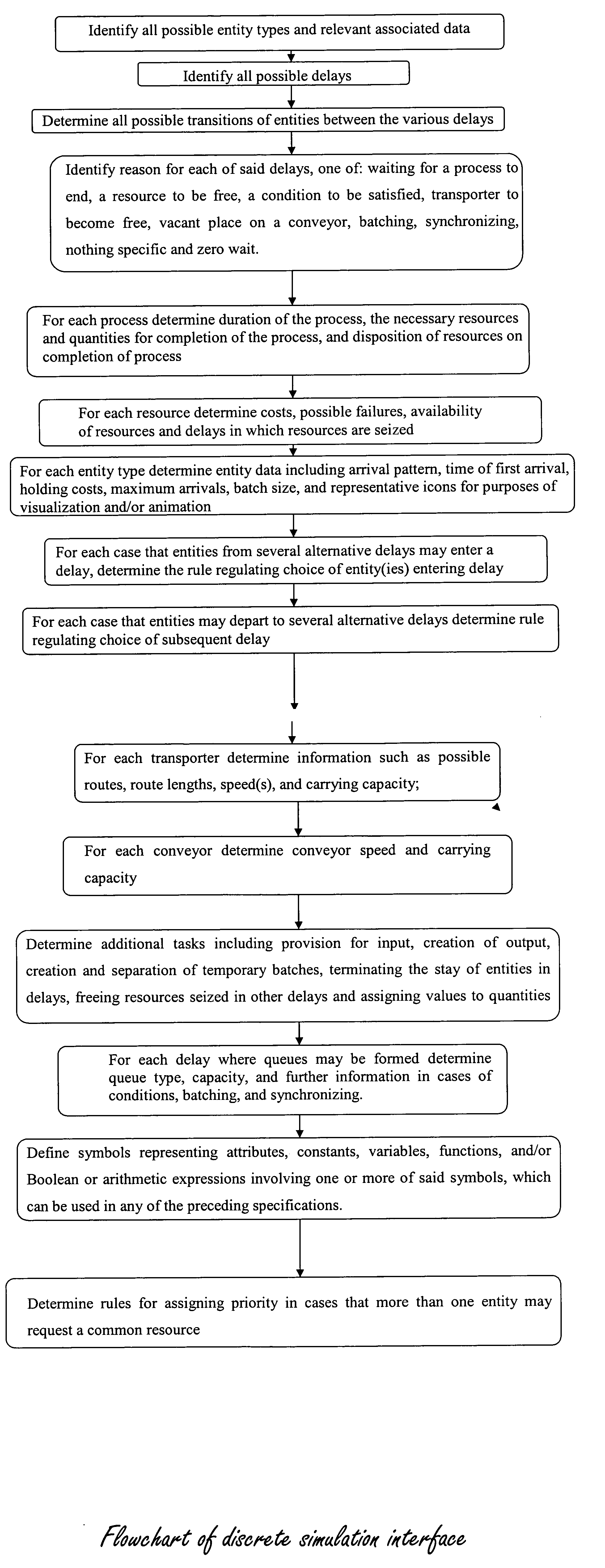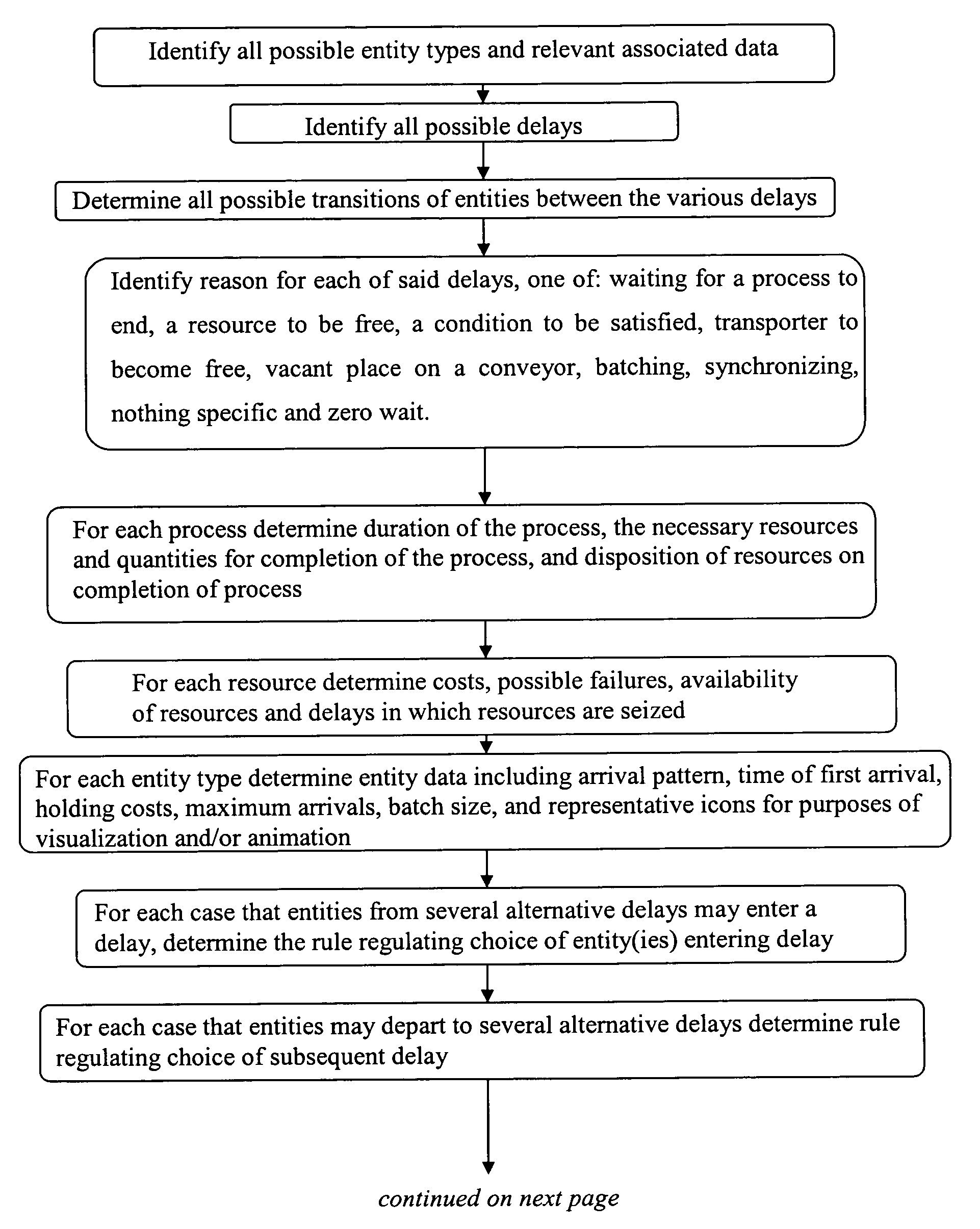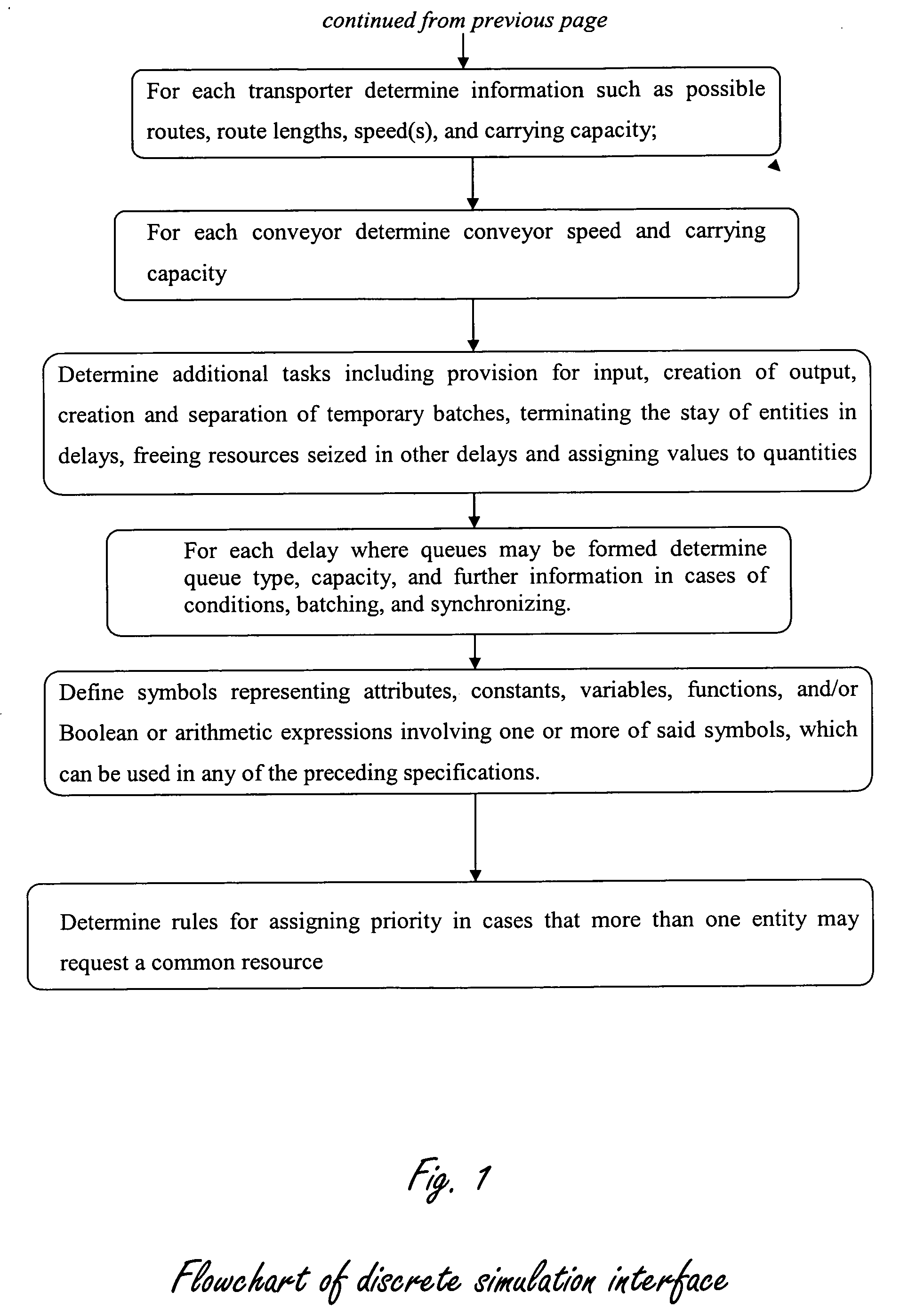Discrete event system simulation interface
a simulation interface and discrete event technology, applied in the field of simulation interfaces for discrete event system simulations, can solve the problems of potential communication gap between the domain expert and the system expert, simulation expert cannot learn confidential information, and system is not necessarily user-friendly, so as to eliminate possible misunderstandings
- Summary
- Abstract
- Description
- Claims
- Application Information
AI Technical Summary
Benefits of technology
Problems solved by technology
Method used
Image
Examples
Embodiment Construction
[0018]The following description is provided, alongside all chapters of the present invention, so as to enable any person skilled in the art to make use of said invention and sets forth the best modes contemplated by the inventor of carrying out this invention. Various modifications, however, will remain apparent to those skilled in the art, since the generic principles of the present invention have been defined specifically to provide a discrete event system simulation interface.
[0019]Discrete event systems are systems in which the events that occur may be represented as a time-ordered list. These systems may be simulated by creating a model representing the various entities, delays, and transitions in the system. Software tools exist to create such simulations, but are either specific to a particular industry, or require the services of a simulation expert to operate, or both.
[0020]The main objective of the invention is to make a general simulation tool that is user-friendly enough...
PUM
 Login to View More
Login to View More Abstract
Description
Claims
Application Information
 Login to View More
Login to View More - R&D
- Intellectual Property
- Life Sciences
- Materials
- Tech Scout
- Unparalleled Data Quality
- Higher Quality Content
- 60% Fewer Hallucinations
Browse by: Latest US Patents, China's latest patents, Technical Efficacy Thesaurus, Application Domain, Technology Topic, Popular Technical Reports.
© 2025 PatSnap. All rights reserved.Legal|Privacy policy|Modern Slavery Act Transparency Statement|Sitemap|About US| Contact US: help@patsnap.com



